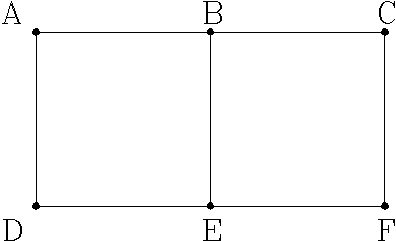SCHOLASTIC APTITUDE TEST 1997.
PHYSICS
| Time: ONE Hour |
Max. Marks: 60
|
| (10.45 AM - 11.45 AM) |
|
Section A
10 Marks
Section B 20
Marks
Section C 30
Marks
Useful Physical constants:
- acceleration due to gravity = 10 ms–2
- Charge of electron e = 1.6 x 10-19
C
- 1/4p e o = 9 x 109
Nm2C–2
- Density of wood = 0.5 gm/cc
SECTION A
- A wire carries a current vertically downwards. The
magnetic field to the East of the wire is directed
towards
.
- A source of sound is moving at 36 kmph straight
towards an observer moving away from it at 36 kmph
and along the same straight line. The frequency of
the source is 400 Hz. Frequency of the note received
by the observer is .
- If 0.16 mA of current is flowing through a wire, the
number of electrons crossing any section of the wire
in a minute is .
- A hypothetical radioactive nucleus emits a proton and
a positron. It’s mass number decreases by
and it’s charge number decreases by .
- Mass equivalent of energy of 186.2 MeV is
amu.
- In electrolysis of copper sulphate solution, an
alternating current source is used. The mass of
copper deposited on the cathode plate is
.
- In wavelength of a wave in a certain medium is 20 cm
and its velocity is 350 m/s. Its wavelength in a
medium where the velocity is 1400 m/s would be equal
to .
- The energy consumed by a 20 W lamp used for 25 hrs is
kWh
- If a cell of emf 6 V drives a current of 2 amp
through a circuit for 10 minutes, the amount of work
done by it is
.
- 20 mJ of work is done in moving one micro Coloumb of
charge between two points. The potential difference
between these points is .
SECTION B
- Light travels at v1 in a medium and at v2
in another medium. The ratio of refractive indices of
the media is .
- The closest distance between particles one at an
extreme position and another at the equilibrium
position is 2 m. If the frequency of this wave
is 2.5 kHz, the velocity of the wave is
.
- At 1 atmosphere pressure and a certain temperature
the velocity of sound is 350 m/s. At 2
atmosphere pressure and same temperature the velocity
would be .
- Two stones are released from rest one from a height
of 9 m and another from some unknown height
above the ground. One of the stones hits the ground 1
s after the other strikes the ground. The height from
which the second stone is released can have values of
.
- Light falling on a sphere made of a photoelectric
material causes it to lose electrons. If a sphere
initially uncharged has acquired a charge of 3.2 m C,
the number of electrons it has lost is
.
- Energy stored by a capacitor is given by the
expression
 . If a 5 m F capacitor charged
to 200 V, the energy it possesses is equal to .
. If a 5 m F capacitor charged
to 200 V, the energy it possesses is equal to .
- 2 kgf/cm2 = N/m2.(
kgf = g N )
- Momentum is mv and kinetic energy is mv2/2.
A body of mass 4 kg has a kinetic energy of 32 J. It’s
momentum is .
- A solid object A of mass 200 gm object placed in
contact with a source supplying heat at a constant
rate undergoes a rise in temperature of 20 C° in 40
s. Another solid object B of mass 300 gm needs 20 s
for a 5 C° rise in temperature. The ratio of
specific heats of A and B is .
- Mass of a radio active substance at a certain moment
is 16 gm. The mass of it that disintegrates in it’s
third half-life period is .
SECTION C
In some of the following questions information ( A new rule, a
new equation…) required to answer the questions is provided.
Read the information provided carefully and answer the following
question. The questions can be answered by proper appreciation of
the information provided.
Resultant R of two parallel
forces P and Q acting at A and B is equal to
P+Q and the point C where it acts can be
located from the relation P(AC)=Q(BC). (
Refer to the figure shown below )

The resultant of two parallel forces is 40 N
and acts 10 cm from the force of 10 N. The other
force acts at a distance of
from the 10 N force.
|
- A stone projected in to the air from the
ground level with a velocity v directed at q above
the horizontal hits the ground at a horizontal
distance of
 from the point of projection.
The maximum height attained by it during the flight
is given by the expression
from the point of projection.
The maximum height attained by it during the flight
is given by the expression  .
.
A projectile hurled at
45° attains a maximum height of 25 m. The
horizontal distance it travels before it strikes the
ground is
.
- A positively charged particle travelling
vertically upwards experiences a northward force due
to magnetic field directed at right angles to it. A
negatively charged particle travelling northward in
the same magnetic field will experience a
force.
- A long uniform wooden stick of cylindrical
cross section is weighted at the bottom such that a
length of 20 cm of it protrudes out of water as it
floats vertically. If a length of 10 cm is sawed off
from the stick and it is floated again, the length
that protrudes above the water surface would be .
- A lens forms a twice magnified image of an object
kept 30 cm away from it on oneside on a screen kept
on the other side. Without disturbing the object, the
lens is moved through 5 cm towards the object, the
screen must be moved by
to obtain a sharp image.
- Between any two adjacent junctions
the resistance of a wire frame shown is same.
If the resistance between B and E is R,
resistance between A and B is .
|

|
- An insect is located at the edge of a fan
blade of length 40 cm. It starts walking toward the
centre of the fan. As the insect moves 10 cm from its
initial position, the blade has turns through a right
angle. The distance between initial and final
positions is
.
- Two cars are travelling towards a junction along two
different intersecting roads. One of them is 200 m
away and is moving uniformly at 10 m/s. The other
located 100 m away starts from rest and
accelerates uniformly at 2 m/s2 towards
the junction. The interval between the moments when
the cars pass the intersection is .
- A wire is of square cross section of side ‘a’
and length L and has a resistance R. Another wire
made of same material and of twice greater length has
the same volume as the first. The electrical
resistance of the second wire is .
- A ring with a uniformly distributed charge (Q) of
radius R repels a point charge (q) placed on its axis
with a force F given by the expression
 where x is the distance of q from the
centre of the ring.
where x is the distance of q from the
centre of the ring.
A point charge of 5 m C
is located on the axis of a ring of radius 60 cm carrying
a charge of 40 m C. The distance between any point on the
ring and the point charge is 100 cm. The force
experienced by the point charge is
.
 . If a 5 m F capacitor charged
to 200 V, the energy it possesses is equal to .
. If a 5 m F capacitor charged
to 200 V, the energy it possesses is equal to .
 from the point of projection.
The maximum height attained by it during the flight
is given by the expression
from the point of projection.
The maximum height attained by it during the flight
is given by the expression  .
.
 where x is the distance of q from the
centre of the ring.
where x is the distance of q from the
centre of the ring.